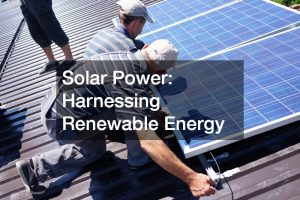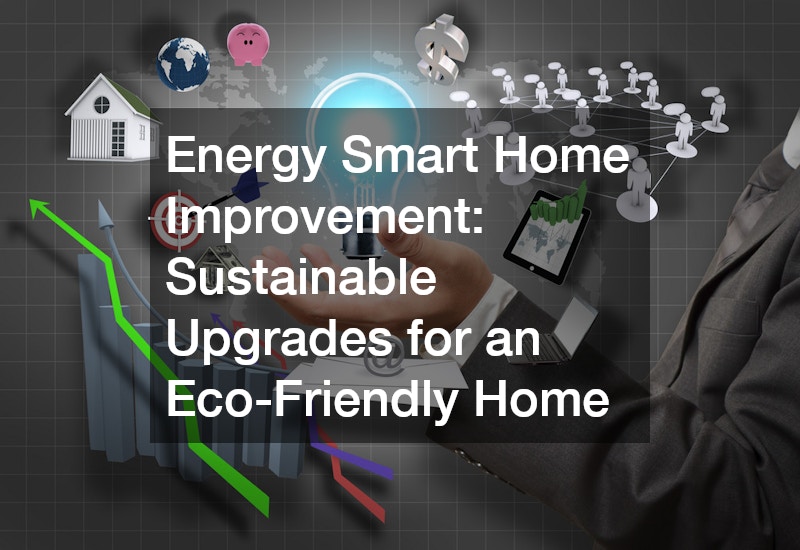Energy Smart Home Improvement: Sustainable Upgrades for an Eco-Friendly Home
Introduction: The Importance of Energy Smart Home Improvements
- The need for energy efficiency has never been more crucial. In today’s world, increasing energy costs and growing environmental concerns demand innovative solutions to reduce energy consumption and carbon footprints.
- Arguments for a more sustainable lifestyle have been bolstered by rising electricity bills and the pressing need to address climate change. Individuals and organizations alike are increasingly seeking methods to lessen their environmental impact.
- Innovative home improvement projects focused on sustainability and eco-friendly solutions are rising in popularity. These projects aim to not only conserve energy but also enhance the overall comfort and value of homes.
- Homeowners engaging in these improvements can expect significant savings in energy costs, along with an increase in the market value of their properties. By investing in energy smart home improvements, they contribute to a greener future while benefiting from lower utility bills.
Start Small: Energy-Efficient Lighting Solutions
- Switching to LED lighting is one of the simplest yet most effective energy-efficient upgrades. LED bulbs consume up to 75% less energy than traditional incandescent bulbs, reducing both energy usage and electricity bills.
- Smart lighting systems, such as Philips Hue, provide additional energy savings through automation and remote control. These systems can be programmed to turn off unused lights and adjust brightness levels according to different times of day.
- Homeowners looking for actionable steps should consider replacing incandescent bulbs with energy-efficient LEDs. Adding smart dimmers and intelligent lighting controls further optimizes energy management, creating a more efficient lighting system.
Solar Power: Harnessing Renewable Energy

- Installing solar panels offers significant long-term benefits in terms of energy savings and reducing reliance on non-renewable energy sources. Solar power can substantially decrease utility bills and contribute to a more sustainable energy grid.
- Beyond the immediate cost reductions, solar panel installations can increase a home’s value. Homes equipped with solar energy systems are often more attractive to buyers, thanks to their lower future energy costs and environmental benefits.
- Homeowners in the U.S. can take advantage of federal and state tax credits, such as the Residential Renewable Energy Tax Credit, to offset installation costs. Conducting an energy audit is a recommended first step to determine the optimal size and positioning for solar panels.
Upgrade to Energy-Efficient Windows
- Energy-efficient windows, such as double or triple-pane designs, help minimize temperature loss and improve indoor climate control. Such windows are designed to provide better insulation, reducing the need for heating and cooling.
- Windows with low-E glass coatings can further enhance energy efficiency by reflecting heat and reducing UV light transmission. This helps maintain interior temperatures and protects furniture from fading.
- Homeowners can achieve significant energy savings by replacing old, drafty windows with ENERGY STAR-rated options. These upgrades not only improve comfort but also contribute to lower heating and cooling costs.
Improve Insulation for Year-Round Comfort
- Proper insulation is crucial for maintaining a consistent indoor temperature, regardless of the season. It prevents warm air from escaping during winter and keeps cool air inside during summer, reducing the demand on heating and cooling systems.
- Eco-friendly insulation materials, such as recycled denim, cellulose, and spray foam, offer sustainable options for effective thermal barriers. These materials not only improve energy efficiency but also have a lower environmental impact.
- Insulating attics, walls, and basements can lead to significant reductions in energy bills. According to the U.S. Department of Energy, proper insulation can save homeowners up to 15% on heating and cooling costs.
Smart Thermostats for Efficient Climate Control
- Smart thermostats, such as those from Nest or Ecobee, learn homeowners’ routines and adjust temperatures automatically for optimal energy use. These devices enhance comfort while reducing unnecessary energy consumption.
- Integrating smart thermostats with other home systems can amplify energy savings, potentially reducing energy use by up to 10-12%. They can manage heating and cooling more efficiently by operating in sync with other smart devices.
- Setting a thermostat schedule is an easy way to optimize climate control. Homeowners should program their thermostats to lower heating or cooling settings when they are not at home, ensuring energy is not wasted.
Energy-Efficient Appliances for a Greener Home
- Switching to ENERGY STAR-rated appliances is a savvy move for those aiming to reduce household energy consumption. Such appliances are designed to use energy more efficiently than their standard counterparts.
- Older appliances, particularly those over ten years old, tend to consume much more electricity. By replacing these with modern, energy-efficient models, homeowners can see a marked decline in their energy bills.
- Replacing outdated appliances may involve an upfront cost, but the long-term savings on electricity bills justify the investment. With energy-efficient refrigerators, dishwashers, and washers/dryers, homeowners contribute to a reduction in overall energy demand.
Water Conservation: Energy Smart Plumbing Solutions
- Low-flow plumbing fixtures, including faucets, showerheads, and toilets, help minimize water use. These fixtures use advanced technology to maintain pressure while reducing the water flow rate, saving both water and energy.
- Tankless water heaters are another efficient solution, heating water on demand instead of maintaining a reservoir of hot water. This reduces standby energy losses typical of traditional tank heaters.
- Upgrading to water-efficient models can yield considerable savings in both water and energy expenses. Homeowners should replace old fixtures and water heaters to enhance efficiency and reduce utility costs.
Innovative Home Improvement Projects: Going Beyond Energy Efficiency
- The latest home improvement trends emphasize a holistic approach to energy management. Fully integrated energy systems that combine renewable energy sources with smart technology lead the way in sustainable living.
- Home automation enables the control of various systems such as lighting, heating, and even irrigation. This integration maximizes energy efficiency, ensuring that every aspect of the home operates optimally.
- Innovative ideas such as green roofs and passive solar design present novel ways to enhance a home’s ecological footprint. These concepts offer additional benefits, including increased insulation and natural climate control.
Sustainable Landscaping for Energy Efficiency
- Strategically planted native trees and shrubs can provide natural cooling, reducing a home’s reliance on air conditioning. These plants act as natural barriers, shielding homes from the sun’s heat and creating comfortable outdoor spaces.
- Creating shaded areas not only enhances outdoor living spaces but also maintains cooler indoor temperatures. This reduces the load on air conditioning systems during the hot summer months.
- Implementing sustainable landscaping practices leads to substantial energy savings. Homeowners should use native plants and design their landscapes to naturally cool their homes for a more energy-efficient environment.
Incentives and Rebates for Energy Smart Upgrades
- Federal and state-level tax credits and rebates are available for energy-efficient home improvements. Programs such as the Residential Renewable Energy Tax Credit offer financial incentives to encourage the adoption of green technologies.
- Homeowners should explore various local and national programs that support energy-saving upgrades. These incentives can significantly offset the initial costs of implementing energy-efficient solutions.
- Researching available programs before starting any project is crucial. By taking advantage of energy-saving incentives, homeowners can make cost-effective decisions while enhancing their home’s efficiency.
How to Combine Energy Smart Upgrades with Innovative Home Improvements
- Combining energy smart home improvement projects with innovative home improvements offers a dual benefit of enhanced efficiency and increased property value. Integrated systems provide a comprehensive approach to sustainable living.
- Smart home technology paired with eco-friendly materials creates a fully sustainable environment. Examples include using solar panels alongside energy-efficient appliances and incorporating green building materials.
- Embracing both energy-smart and innovative home improvement ideas ensures the maximum benefit from upgrades. Such a holistic approach not only reduces energy consumption but also enhances the overall quality and value of the home.
Conclusion: The Future of Energy Smart Home Improvements
- Energy-efficient upgrades offer numerous benefits, including lower utility bills and a reduced environmental impact. Investing in these improvements leads to a greener, more sustainable home.
- Homeowners are encouraged to start with small, manageable projects and gradually implement larger upgrades. This progression ensures that each improvement is effectively integrated within the home’s ecosystem.
- The trend of combining innovative home improvements with energy-saving technologies continues to grow. As more homeowners adopt these practices, we move closer to achieving both enhanced comfort and greater property value.
“`

